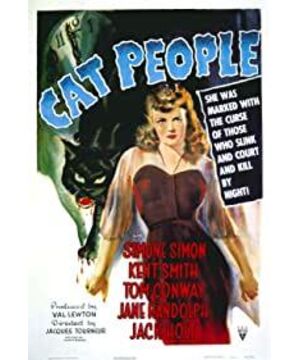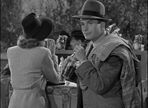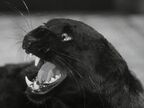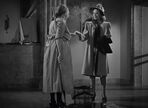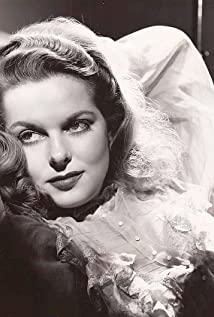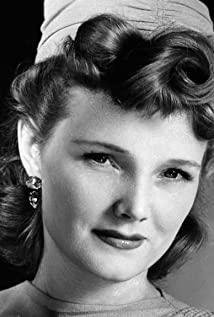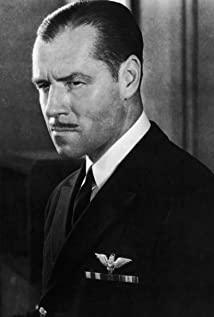early masters of cinema did indeed like to pursue some kind of "seeing" less" expression. But sometimes we can't just listen to the director's words, but should analyze the specific situation. For example, when Hitchcock used spectacle lenses dropped on the grass to refract the murder scene in "Stranger on a Train", we can fully agree that this is an active aesthetic pursuit of the director. Because the process of Bruno strangling a woman is relatively easier to show in the camera; Similarly, Lubitsch habitually uses a door to block the audience's sight, not because the things behind the door are inconvenient for the audience to see, but there must be some kind of The genius "Lubitsch Touch" needs to be delivered. But by contrast, Turner's so-called "seeing less" is somewhat underpowered. Because considering the age when the film was produced, it seems more reasonable to believe that the reason why there is no panther scene is not to mobilize the audience's psychology, but just that the special effects technology of the film at that time simply could not achieve the kind similar to that in Michael Jackson's MTV. Deformation effect only!
Of course, even if the above doubts are established, it is not enough to completely deny the effect of the implicit expression that Turner is pursuing. After all, there are indeed situations in the process of artistic creation that were originally compelled to end up with fantastic results. But the question is does this film really fall into this category? The following examples are briefly analyzed.
This episode of the Leopard Girl following her husband and female colleague out of jealousy has a plot distortion from the very beginning: in a secluded street at midnight, the Leopard Girl (why is it called Catman?) The high-heeled shoes make a particularly loud noise. Can the woman being followed know nothing about it? When the dull nerves are alert and stop to look back, there is no one behind them - a common tactic in horror and thriller movies. The scene that really frightened the audience came at the last moment of the segment: the braking sound before the bus came in was exactly like the howl of a beast when it was pounced on its prey! And because the picture did not arrive and the sound came first, the horror was greatly enhanced! If Turner didn't take advantage of the sound similarity here creatively and just ended up with a patrolman or a passerby breaking into the picture. Although it is also guaranteed that the audience does not see the Leopard Girl, it can also release their tension, but the artistic quality is greatly reduced. From this, it seems that a conclusion can be drawn: "seeing less" itself does not guarantee better results, and whether the story can be told in a novel way that the audience does not expect is the most important thing!
It is a pity that there are very few passages in the film with a similar level of novelty. That said to be quite a classic swimming pool chase seems to be moving a lot, but it actually falls into the cliché mentioned above. At the end, the woman turns into a leopard and kills a psychiatrist, which is even more disappointing: it was presented by projecting shadows on the wall! Indirect and implicit, "penetration little by little", we can all accept these. But please, when it's almost over, it doesn't make sense for you to let the audience see the leopard girl's transformation and fighting live, right? This anti-climax approach only further reinforces the belief that Turner's lack of specific representations of the Leopard is limited by technology.
Aside from the technical aspects, the film is not very successful in character building and plot arrangement. At least not up to the level of many classic B-level films of the same period. For example, the female colleague in the film. She has been with the hero for a long time and has always loved each other deeply. But the triangular emotional entanglement has almost no explanation in the film before the man marries the leopard woman. Until the relationship between the husband and wife was in crisis, she suddenly came out to confess her love, and caused the man to file for a divorce from Leopard Girl? Both character behavior and plot twists are overly simplistic and blunt. Another example is the mysterious catwoman who appeared in the restaurant. I once thought that this role was specially designed by the director to create suspense: the audience would be unable to determine who did those "unseen" murders because of her existence. But the result? ...
"Catwoman is in a way as important as Citizen Kane." Here's what Martin Scorsese said about the film in the same documentary. But I can only understand it as an advertising slogan to promote American movies. And it's exaggerated.
View more about Cat People reviews


